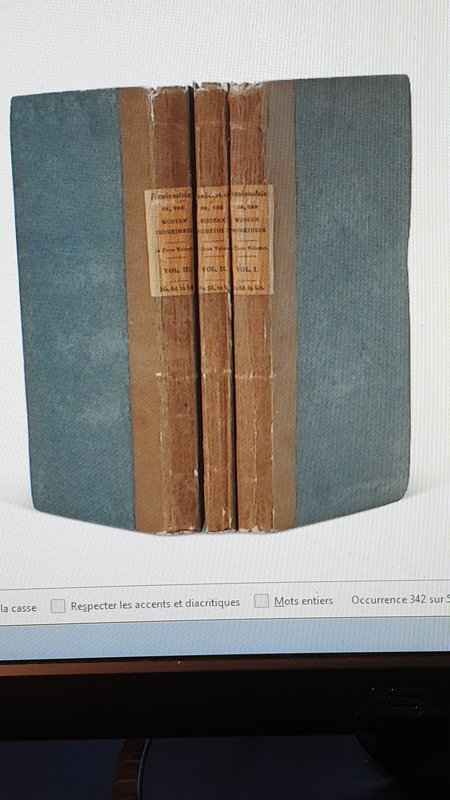Frankenstein à un million de dollars
Cette belle édition du vénérable ouvrage de Mary Shelley (en trois tomes, voir descriptif plus bas) a été mise à l'encan, cet après-midi, chez Christie's de Londres. L'acquéreur a dû poser 950.000 dollars sur la table pour l'emporter.

Mary Shelley's Frankenstein
Uncut in original boards
[SHELLEY, Mary Wollstonecraft (1797-1851).] Frankenstein: or, The Modern Prometheus. London: Lackington, Hughes, Harding, Mavor, and Jones, 1818.
The superb Manney copy of a masterpiece of gothic horror, uncut in the original boards. Frankenstein was conceived during the rainy summer of 1816 beside Lake Geneva, where the author and Percy Shelley were staying with Lord Byron. It was Byron’s suggestion that the group, who had amused themselves with reading French translations of German ghost stories, should each write their own. In the preface to the 1831 edition, Mary Shelley writes: “I busied myself to think of a story, —a story to rival those which had excited us to this task. One which would speak to the mysterious fears of our nature, and awaken thrilling horror—one to make the reader dread to look round, to curdle the blood, and quicken the beatings of the heart.” The idea came to her in an “acute mental vision” as she tried to sleep: “I saw the pale student of unhallowed arts kneeling beside the thing he had put together. I saw the hideous phantasm of a man stretched out, and then, on the working of some powerful engine, show signs of life, and stir with an uneasy, half vital motion.”
Published anonymously on 1 January 1818 in a run of 500 copies, the first edition included a preface written by Percy Shelley and a dedication to the author’s father, William Godwin. Its narrative, of a living being fashioned with materials found in "the dissecting room and the slaughter-house" and rejected by its maker, has now reached the same mythic cultural status as Don Quixote and Robinson Crusoe. Yet the contemporary reviews were mixed, with the Quarterly Review sufficiently morally outraged to wonder "whether the head or the heart of the author be the most diseased," while Walter Scott praised her “original genius” and “uncommon powers of poetic imagination.” Copies in the original boards are exceptionally rare, this being the only set to appear at auction since 1985. Just as remarkable is the Manney copy's unsophisticated, crisp, and clean condition. Ashley V, 29; Lyles B1a; Tinker 1881; Wolff 6280.
Three volumes, 12mo (190 x 109mm). Half-titles and advertisements in each volume (few light spots at ends, neat erasures from verso of each title-page and from vol 3 inside front cover). Original blue-gray boards, drab paper spines, printed spine labels, uncut (light wear to spines, with scattered tiny chips at joints and to vol. 2 spine label, 1cm repaired tear to vol. 1 spine); dark blue morocco pull-off case by Riviere with enclosed asbestos lining, chemises. Provenance: E.L.A. Bibl. (inkstamp on verso of each title-page) – Richard Manney (his sale, Sotheby’s, 11 October 1991, lot 283).

/https%3A%2F%2Fprofilepics.canalblog.com%2Fprofilepics%2F3%2F9%2F392883.jpg)


/image%2F0404300%2F20240417%2Fob_bdc6b4_hr-eleo-wlasta.jpg)
/image%2F0404300%2F20240416%2Fob_791897_screenshot-2024-04-15-at-15-40-56-les.png)
/image%2F0404300%2F20240407%2Fob_0989f4_bucquoy.jpg)
/image%2F0404300%2F20240322%2Fob_76f86c_chenilleplumeaudumorphobleu.jpg)